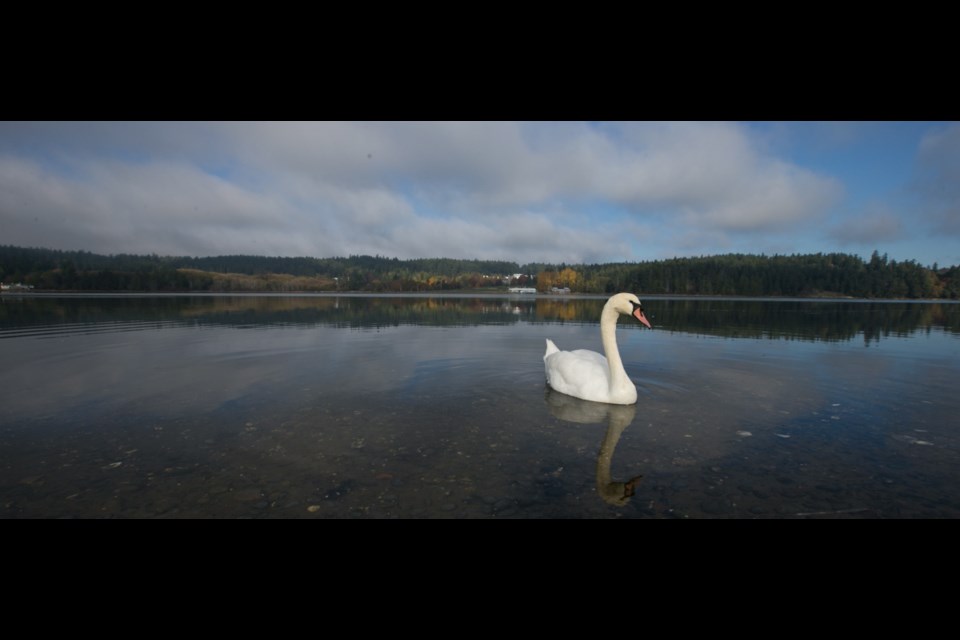Until 2008, Esquimalt Lagoon and its environs were the last bastion for beach fires in Greater Victoria.
But the natural beauty of the place attracted too many people having too many fires on spring and summer evenings, and Colwood council decided enough was enough.
Beach fires or no, the area is as popular and vital as ever.
Visitors spend their time strolling with their dogs around the lagoon and along the Coburg Peninsula, as well as beachcombing, taking pictures and birdwatching. It’s also a frequent destination for the nature kindergarten program launched last year at Sangster Elementary School, and in decades past was favoured by Emily Carr as a vista to inspire her art.
Kayakers are a common sight on the lagoon, while rowing has faded away. Rowing programs were operated for a time out of the Royal Roads University boathouse, which has been transformed into an Aboriginal Learning and Cultural Centre.
The Coburg Peninsula, made up of sand and silt, is the two-kilometre-long spit of land that forms the seaward border of the lagoon. Ocean Boulevard runs along it from end-to-end.
The spit was used as a rifle range during the 1800s, while at the mouth of Colwood Creek — one of three main creeks feeding the lagoon — a sawmill was in operation from 1863 to 1871. It was replaced by a tannery.
All such activity is long gone, of course, and the calm waters and beach area now form one of B.C.’s seven federal migratory bird sanctuaries. It’s a birdwatcher’s heaven, replete with blue herons, several types of gulls, mergansers and mallards — to name just a few of the species that can be seen there.
The Esquimalt Lagoon Stewardship Initiative, made up of community and environmental groups, works on restoration and enhancement.
The Esquimalt and Songhees First Nations have historic links to the lagoon, and both are members of the stewardship group. One member is Colwood Coun. Judith Cullington, who counts the lagoon as one of the local spots she most enjoys visiting.
“You go down there anytime — good weather, bad weather — and there are always people parked, just sitting and watching, out on the beach enjoying. And on a sunny day it’s packed. It’s wonderful to see lots of people out there.”
Many visitors like to feed the birds, but the practice is discouraged, Cullington said.
“It’s not good for the birds, partly in terms of what people feed them but also in terms of getting them habituated to humans.”
The lagoon provides a range of scenic backdrops, including the Olympic Mountains to the south and residences to the west. Up from the shoreline on one side are the fields and forest of the Royal Roads site, while at the east end, the bridge over the lagoon’s tidal channel offers a link to nearby Fort Rodd Hill and Fisgard Lighthouse.
An ongoing issue that concerns the stewardship group, Colwood council and others is erosion at the lagoon, Cullington said. Erosion necessitated repairs to the lagoon’s bridge in 2010.
Colwood’s plan is to put options for dealing with the problem before the public in time for the next municipal election.
“We’ll let our community tell us what they would like us to do down there.”
